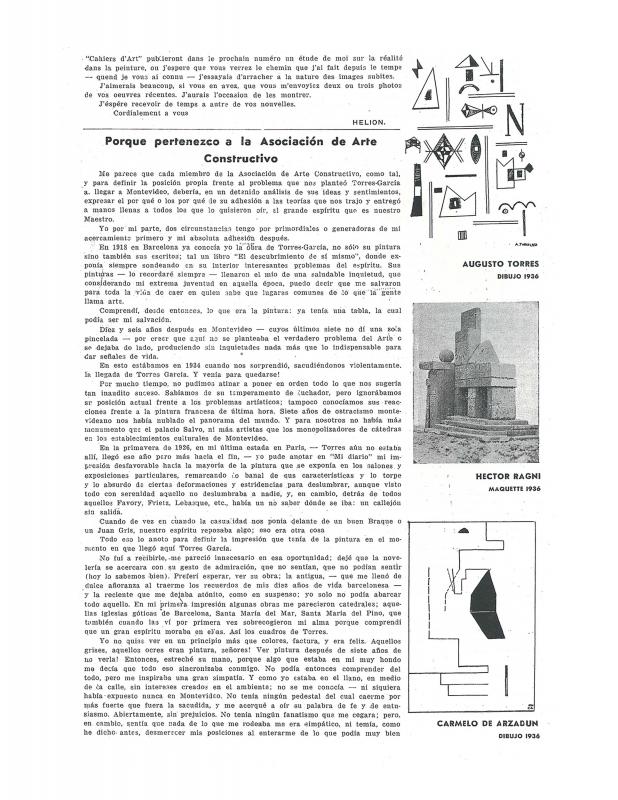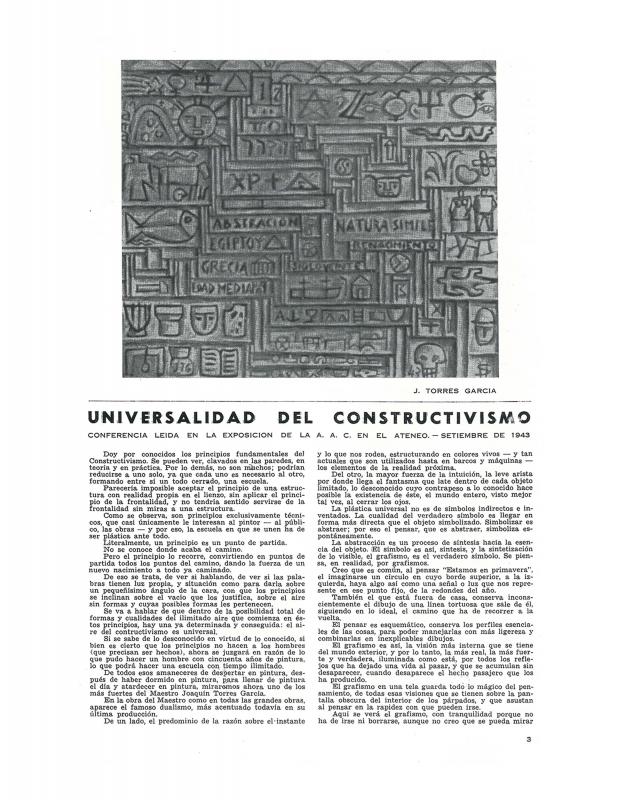Joaquín Torres-García (1874–1949) arrived in Montevideo in April 1934, an event that proved to be a turning point in his career. After studying and working for many years overseas—evolving from the Mediterranean classicism of the frescoes he painted in Barcelona to a “modern classicism” that was similar to the neoplasticism and other movements created by the European avant-gardes— Torres-García produced a style of his own, which he called Universalismo Constructivo [Constructive Universalism]. This style combined fundamental elements of a number of aesthetic approaches in a doctrinaire attempt to solve the crisis facing the modernist movement. Torres-García saw “constructive universalism” as a new kind of modern art for Latin America, a concept whose ultimate impact could equal the one created by the art of ancient Greek civilizations. In the maestro’s opinion, the idea represented a new direction for modern art that blended essential elements of the indigenous art of the Americas with the fundamental principles of constructivism.
In 1930, in Paris, Torres-García helped to create the Cercle et Carré group with the artist Michel Seuphor (alias “Orpheus”) and others, in an attempt to bring together international artists who were interested in abstract geometrical art. The group was disbanded and the magazine folded in 1931, but the name of the publication was resuscitated in Uruguay by the A.A.C., which was founded by Torres-García on his return to Montevideo. Two years later, it was re-launched as Círculo y Cuadrado as a means of creating a dialogue between Uruguayan and European artists.
[As complementary reading, see the ICAA digital archive for the following articles published in Cercle et Carré (Círculo y Cuadrado): by Joaquín Torres-García “Aquí, en Montevideo” (doc. no. 1263116), “El plano en el que deseamos situarnos” (doc. no. 1263054), “Reflexiones” (doc. no. 1263191), and “El arte naturalista y el arte geométrico” (doc. no. 1263101); by Guido Castillo “El constructivismo. Muerte y nacimiento de un momento histórico” (doc. no. 1263176); by Alexis Carrel “El hombre, una incógnita” (doc. no. 1263085); by Edgar Varese “Nacionalismo y Folklore” (doc. no. 1263070); by Carmelo de Arzadun “Necesidad de agruparse para la formación de un medio artístico” (doc. no. 1263023); by San J. Luis Vicente “Nosotros y nuestro ambiente” (doc. no. 1263146); by Héctor Ragni “Nuestro arte constructivo y las teorías cubistas” (doc. no. 1263131), and “Por qué pertenezco a la asociación de arte constructivo” (doc. no. 1263007); and by Francisco Lanza Muñoz “Universalidad del constructivismo” (doc. no. 1263161)].












